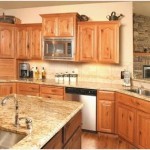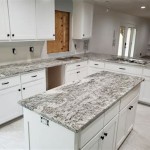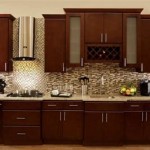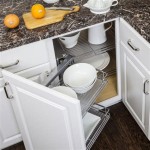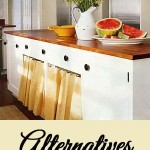Lining Kitchen Cabinet Shelves: Essential Aspects
Kitchen cabinet shelves play a crucial role in organizing and maximizing storage space in the kitchen. By lining these shelves with the right materials, you can enhance their functionality and make your kitchen a more efficient and enjoyable space.
Materials for Cabinet Liners
When selecting materials for cabinet liners, consider their durability, ease of cleaning, and aesthetics. Some popular options include:
- Shelf liners: Thin, flexible sheets made of vinyl, plastic, or fabric that protect shelves from scratches and spills.
- Contact paper: Self-adhesive paper available in various colors and patterns, providing a decorative touch while protecting surfaces.
- EVA foam liners: Interlocking foam squares that provide cushioning and protection for delicate items.
- Cork liners: Natural material that absorbs moisture, reduces noise, and provides a non-slip surface.
- Laminate liners: Thin sheets of durable laminate that offer a smooth, water-resistant surface.
Benefits of Lining Cabinet Shelves
Lining kitchen cabinet shelves offers several advantages:
- Protection: Liners protect shelves from scratches, spills, and stains, extending their lifespan.
- Enhanced cleaning: Smooth and non-porous surfaces are easy to clean, making maintenance a breeze.
- Added cushioning: Liners provide extra cushioning for delicate items like glassware and china.
- Improved organization: Liners can create a designated space for different items, optimizing storage and accessibility.
- Aesthetic appeal: Decorative liners can enhance the appearance of cabinets and complement kitchen décor.
Installation Tips
To effectively line cabinet shelves, follow these tips:
- Prepare surfaces: Clean and dry shelves thoroughly before applying liners.
- Measure and cut: Measure the shelves accurately and cut the liners to fit precisely.
- Apply carefully: Peel off the backing of self-adhesive liners and align them carefully on the shelves.
- Trim edges: Use a utility knife or scissors to trim excess liner around the edges.
- Overlap seams: If necessary, overlap seams slightly and trim the excess for a seamless finish.
- Wipe down surfaces: Wipe liners with a damp cloth as needed to remove dust and spills.
- Deep clean periodically: Remove the liners and soak them in warm, soapy water to deep clean them.
- Replace when necessary: If the liners become damaged or worn, replace them promptly to maintain the functionality and aesthetics of your cabinets.
Maintaining Cabinet Liners
Keep cabinet liners clean and in good condition with regular maintenance:
By lining kitchen cabinet shelves with the right materials and following proper installation and maintenance practices, you can enhance the functionality, organization, and appearance of your kitchen.

8 Pros And Cons Of Kitchen Cabinet Shelf Liners Everyday Old House

Simple Diy Drawer And Shelf Liners

Simple Diy Drawer And Shelf Liners

How To Choose The Best Kitchen Shelf Liner 7 Tips Everyday Old House

Shelf Liners Kitchen Accessories That Escape Your Attention

Does Shelf Liner Really Extend The Life Of Cabinets Drawers

Simple Diy Drawer And Shelf Liners

How To Line Your Kitchen Cabinets Easily Lining Shelf Liner

Why Using Shelf Liners For Kitchen Cabinets Is Important Morana Group Ltd

Simple Diy Drawer And Shelf Liners Liner Kitchen Pantry
Related Posts

